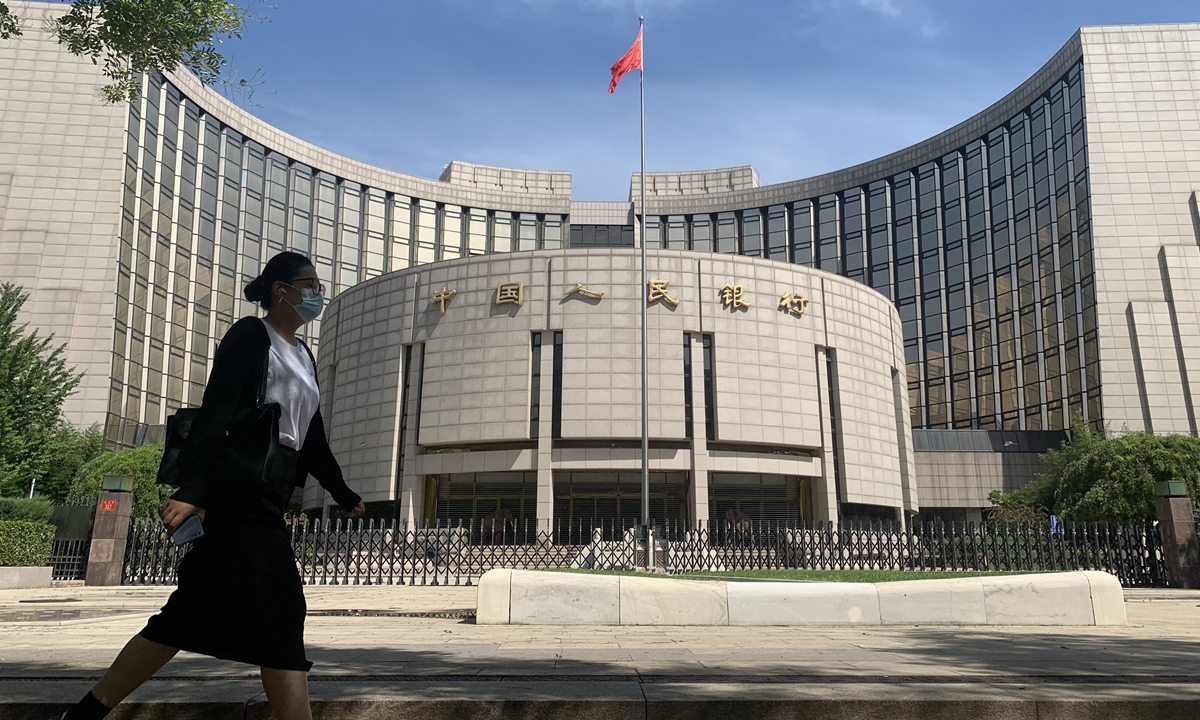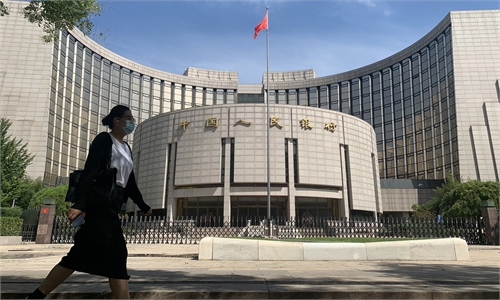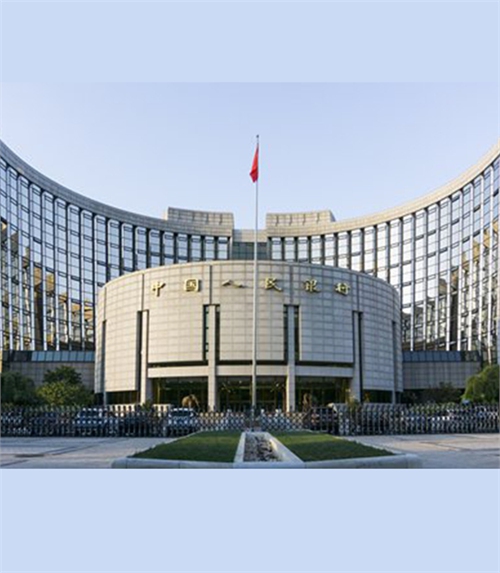
A view of the PBC building in Beijing Photo: VCG
China left its benchmark loan rates unchanged for the ninth straight month on Monday, as the economy continues to recover moderately in the second quarter. Economists expect that monetary policy will remain stable, while enhancing support for weak spots in the real economy.
The one-year loan prime rate (LPR), a market-based benchmark lending rate in China, remains unchanged at 3.65 percent.
The LPR for more than five years, used by many lenders to determine their mortgage rates, also remains unchanged at 4.3 percent, according to data released by the National Interbank Funding Center.
The decision was in line with expectations as the medium-term lending facility (MLF) rate, which serves as a guide to the LPR, has remained unchanged in May, Zhou Maohua, an economist at Everbright Bank, told the Global Times on Monday.
The MLF tool was designed to help banks maintain liquidity by allowing them to borrow from the central bank using securities as collateral. The MLF rate has remained unchanged for the ninth month in a row as well, according to media reports.
Both the amount of new yuan-denominated loans and social financing recorded strong growth in the first four months.
New corporate borrowing has continued to grow compared with last year, showing that current market interest rates are at a reasonable level, Zhou said.
According to the People's Bank of China (PBC), the central bank, new yuan-denominated loans totaled 11.3 trillion yuan ($1.61 trillion) in the first four months, up 2.3 trillion yuan year-on-year.
As of the end of April, broad M2 money supply stood at 280.85 trillion yuan, increasing by 12.4 percent year-on-year, PBC data showed.
Market liquidity remains relatively abundant, and financial support for the real economy has not weakened, experts explained.
China has adhered to a prudent monetary policy this year, which has strongly supported the recovery of economic growth, according to the first-quarter report of the PBC released on May 15.
Economic growth is better than expected and advantages remain to support long-term growth, including a huge market, complete industrial system and rich human resources, the PBC said.
But domestic and overseas challenges remain. For instance, the domestic economy still faces weak internal driving force and insufficient demand, and global economic growth is slowing down, with rampant inflation, the PBC noted.
Prudent monetary policy needs to be precise and forceful, with an appropriate amount of money supply and a steady pace of policy implementation. Inter-cyclical adjustments should be made to maintain reasonable and sufficient liquidity, the PBC stressed.
Zhou said that these policies are expected to support weak spots in the real economy, on condition that money supply remains reasonable and market liquidity is reasonably sufficient.
Though the LPR has remained unchanged, it is expected that the central bank will encourage financial institutions to tap the potential of the LPR reform and actively manage liabilities. It may further stabilize the cost of bank liabilities through structural tools or lowering the required reserve ratio, he noted.
Besides the weak spots, the central bank is also expected to guide financial institutions to serve key emerging sectors such as infrastructure construction, manufacturing, green development and scientific innovation, Zhou added.
Global Times




